A category that is delivering strong sales and margins for our Champs is food to go. Here they reveal what makes their ranges such a success
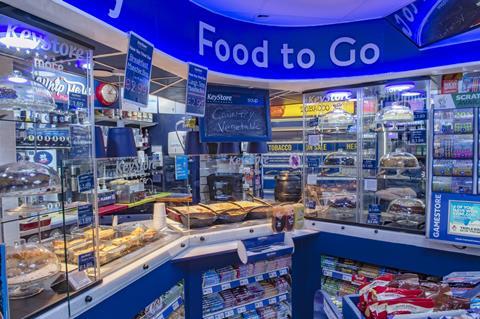

Raj Aggarwal, owner of two Spar stores in Leicester and Yorkshire
Raj keeps a close check on margins to make sure his range is cost effective.

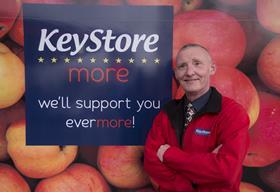

Raj Chandegra, owner of six Londis stores in London
Food to go is a category that Raj wants to make more of after a recent refit in one of his smaller stores.
Wilson Rea, owner of a Keystore More store in Lanark
Wilson invested heavily in food to go earlier this year and his commitment to the category has paid off.
Dan Brown, md for Nisa Local Pinkie Farm, Musselburgh
The addition of a pizza counter and store-made sandwiches have boosted sales and reached new customers.
How has your food to go evolved in recent years?
Raj A: We don’t generally do hot food but we do all the sandwiches and grab-and-go snacks that customers would expect. With food to go, it is all about having something different which is why we have our F’real, Tango Ice Blast and Costa Coffee machines alongside our sandwiches and snacks at the front of store. These kind of brands are a big draw for people and help us stay ahead of the game.
Raj C: Food to go is a category that we are always trying to evolve. We recently introduced Tango Ice Blast, F’real and a new coffee machine in our Barnes store and displayed them all on a three-metre counter with the rest of our food-to-go range. We do a lot more food to go now and have cut back on some of our grocery and non-food lines.
Wilson: We installed a hot food-to-go and milkshake station a few months back and after six months of development, which included putting in a new oven and introducing different types of pasties and pies. Everything is now finally at a place where I’m completely happy with it. The hot counters look much better than our previous offering and customers can see what they are getting. People will now come in early for our bacon baps and then come back for a lunchtime curry, which we get fresh from a local Indian food supplier.
Dan: We started off with just a bakery counter and then started moving in to making our own sandwiches with a deli counter. At the start of the summer, we expanded into hot food with a much larger range and introduced our own homemade pizzas and ice cream.
What challenges do you face when managing your food-to-go offer?
Raj A: It is a bit hit and miss to see which products take off. For example, we started doing pizza-to-go on a trial basis with Chicago Town a few months ago, but it hasn’t worked for us. People just preferred to buy the regular chilled sandwiches they were used to. Shopper demographics play an important part in determining whether people will buy certain food-to-go items.
Raj C: You have to think about staff costs because you don’t want staff standing behind a pizza counter all day serving a few slices when they could be doing other things in the store. We find it harder to get hold of skilled workers now, which means we have to take on more ourselves. We always manage but it just doesn’t make sense for us to put all our staffing resources into food to go. Of course, the hope is that the higher margins will cover the higher costs, but it is still a hard thing to get right.
Wilson: Our current range is going great, but I’m finding it difficult to find a local supplier that can give us access to large pies and lasagnes that we can cook up from frozen and then portion them out to customers. This would give us a better offering for the evening, but at the moment it feels like I’m looking for something that doesn’t exist. I’ve had conversations with half a dozen restaurant suppliers, but they don’t do the kind of volume we need. I never thought I’d be looking around for such large amounts of stock. It is a good sign but it’s frustrating that we can’t give customers what they want.
Dan: Wastage is something you have to keep an eye on with food to go. You have to have a certain amount of waste to keep products fresh and to ensure your availability is good, but it has to be managed properly so that the costs are balanced. Labour is also an issue, because when we are making our sandwiches and hot meals we need to make sure that we make the most of all our staffing resources. For example, if we have a chicken dish then we need to make sure the product goes further by using some of the meat as a sandwich filling as well as in the main meal.
How do you change your product mix to match different seasons?
Raj A: Most of our food-to-go products change on a season-by-season basis. At the very least we try to bring in different themed lines four times a year for the big occasions like Easter, Halloween and Christmas.
Raj C: Adding seasonal lines to your range is something you have to do – there is no ifs or buts about it. Christmas isn’t quite as good as it used to be, but Halloween is something we are getting more in to. It is definitely an event that is growing. Customers seem to respond well to food-to-go products that are themed around a particular occasion. Easter is another good one, but it is a lot of work to keep on updating our food-to-go range throughout the year.
Wilson: We have a good relationship with our main suppliers so we can get them to make up themed dishes like a bean and potato pie for the autumn or a special pie for Christmas that is filled with turkey, gravy and stuffing. They are quite traditional and perfect for when the weather gets a bit colder. I always try to get things in that people can’t get anywhere else. For example, people can have a Lorne [square] sausage roll for breakfast and lots of customers come to us just for that. Doing these kind of seasonal and Scottish lines helps us to create a food-to-go USP.
Dan: I think with our pizza and ice cream we have the opportunity around Halloween to do themed flavours so seasonal varieties are definitely something we will look at this year. Our hot food sells consistently well all year round so we’ll offer some different dishes depending on the season, but we’ll always keep the favourites in stock. It’s a whole job on its own trying to keep the range updated.
Who are your main food-to-go customers?
Raj A: It’s anyone and everyone really. Food to go is pretty universal so we get people coming in for the lunch deal with a sandwich, crisps or chocolate and a drink. Then we have our regulars who pop in for snacks almost every day and also the people who work in the nearby offices who need to buy something to eat throughout the day. We also get some people who would rather grab something quickly than cook something big at home.
Raj C: It’s quite general but at lunch we get a lot of builders coming in for our hot food to go and a drink. People in the area tend to do a lot of work on their houses during the summer so we benefit from that trade. At three or four o’clock we also get the kids coming in for the hot dogs and savoury snacks. We can see the F’real and Tango Ice Blast in our Barnes store doing very well with these customers.
Wilson: We get the workers coming in in the morning as well as our regulars. Local kids also come in for the milkshakes and hot food, and we get a lot of white van men coming in at lunchtime. We also get parents coming in at weekends who can’t be bothered to cook and want something to grab and go.
Dan: We’ve got quite a good mix with our offering so we do attract lots of different people. Before we added in the pizza counter and ice cream, we were getting a lot of workmen coming in for our breakfast rolls. We were getting a lot of young mums coming in before school, too, but now we also get a lot more young people, kids and workers who come in later in the day for a slice of pizza and a scoop of ice cream.
What advice would you give to retailers who are new to the category?
Raj A: You have to try food to go in your store. Even if some things don’t work it is worth experimenting. For every product you try you should wait at least 13 weeks before swapping it out for another one. Wastage is also a big issue so it makes sense to track everything over a set period of time and see if the cost is worth it.
Raj C: I think retailers have to stop relying on grocery and move into higher margin areas like food to go. It is more difficult for a store that is on an estate, where there is less footfall and demand from passers-by, but food to go still has to be included in the product mix and these stores just need to do it on a scale that suits them. Of course, it is easier to put grocery lines out on the shelf and watch them sit there for months without going off, but that just doesn’t work for retailers anymore. People are eating on the move a lot more than they used to and food to go relies on this kind of trade. Nowadays, there is support out there from suppliers and other retailers willing to offer advice.
Wilson: Before doing anything else you need to sit down and look at your customer base. If you already have lots of workers visiting your shop then definitely give food to go a try because these are the kinds of people that will come into your store every day. I would advise other retailers to start off by offering a great breakfast range because once people know about that then they will come back in for lunch. That’s how we started off and since then we have been able to drive footfall and increase sales.
Dan: You have to have an understanding of the hygiene standards and the rules surrounding food to go. If you have this knowledge then it really helps before you start doing any major work on the store. It pays to start off small and make sure that everything is clean and presented to a high standard before adding too many lines. It is important to recognise that you don’t always have to buy new equipment. The good news is there are loads of things like ovens and cooking equipment that you can get second hand which helps to save
What are the top-selling lines within your range?
Raj A: Our Spar-branded sandwiches are our best performers, and our pies and pasties range also sells well. Savoury snacks are another good category, but demand for certain products often depends on the time of year and the type of shopper.
Raj C: Rollover hot dogs do very well for us. In most of our stores, we can sell at least 150 a week alongside our coffee. Also, we always do a deal with our coffee where people who buy a cup can get a croissant for free. We have quite a range of pre-packed sandwiches and the only way we could take that to the next level would be to make them to order in store. But that is something for us to look at in a year or two. At the moment, it works better for us if the customer can serve themselves.
Wilson: Our filled breakfast rolls are our top sellers. We sell thousands of them per month and our customers can use Keystore’s ‘Whip Me Up More’ app to order hot food and drinks for collection in store at a time of their choosing. We promote this service on our Facebook page and through leaflets in store.
Dan: Our hot food is probably doing the best because the kind of meals we do, like southern-fried chicken and pies, help us tap into the evening occasion, when before we were very much known for our breakfast offer.
How much profit do you make on food to go?
Raj A: We make at least 35% margin across our range and food to go is one of the most profitable categories for our store as well as being one of the best performing.
Raj C: With food to go, you can make as much as 40% to 50% compared with the usual 25% to 30% you get on other products. It is good because it gives you a bit of extra money to play with to cover the costs. It is worth it in the end because food to go makes your store a destination for people.
Wilson: Over the past year, we have made a £22,500 profit across our food-to-go range and the average margin for the whole category stands at around 33%. We turned over £151,000 just in food to go during the past 12 months, which is 14% of our business and only behind tobacco and cigarettes in sales. We also make a healthy 200% margin on our milkshakes. We can make up to 100% margin on some hot food lines, too. For example, if we have a whole chicken in the chiller that is about to go out of date, then we can put it in the Rational-branded oven and cook it up for our hot food counter. Customers love it and the oven has a spike that can cook up to six chickens at a time in around 35 minutes.
Dan: One of the main aims of our investment in the category was to increase margins across the store to around 30%. This means focusing on high margins across our food-to-go range, which sits at around 65% to 75%.
What are the top-selling lines within your range?
Raj A: Our Spar-branded sandwiches are our best performers, and our pies and pasties range also sells well. Savoury snacks are another good category, but demand for certain products often depends on the time of year and the type of shopper.
Raj C: Rollover hot dogs do very well for us. In most of our stores, we can sell at least 150 a week alongside our coffee. Also, we always do a deal with our coffee where people who buy a cup can get a croissant for free. We have quite a range of pre-packed sandwiches and the only way we could take that to the next level would be to make them to order in store. But that is something for us to look at in a year or two. At the moment, it works better for us if the customer can serve themselves.
Wilson: Our filled breakfast rolls are our top sellers. We sell thousands of them per month and our customers can use Keystore’s ‘Whip Me Up More’ app to order hot food and drinks for collection in store at a time of their choosing. We promote this service on our Facebook page and through leaflets in store.
Dan: Our hot food is probably doing the best because the kind of meals we do, like southern-fried chicken and pies, help us tap into the evening occasion, when before we were very much known for our breakfast offer.
How much profit do you make on food to go?
Raj A: We make at least 35% margin across our range and food to go is one of the most profitable categories for our store as well as being one of the best performing.
Raj C: With food to go, you can make as much as 40% to 50% compared with the usual 25% to 30% you get on other products. It is good because it gives you a bit of extra money to play with to cover the costs. It is worth it in the end because food to go makes your store a destination for people.
Wilson: Over the past year, we have made a £22,500 profit across our food-to-go range and the average margin for the whole category stands at around 33%. We turned over £151,000 just in food to go during the past 12 months, which is 14% of our business and only behind tobacco and cigarettes in sales. We also make a healthy 200% margin on our milkshakes. We can make up to 100% margin on some hot food lines, too. For example, if we have a whole chicken in the chiller that is about to go out of date, then we can put it in the Rational-branded oven and cook it up for our hot food counter. Customers love it and the oven has a spike that can cook up to six chickens at a time in around 35 minutes.
Dan: One of the main aims of our investment in the category was to increase margins across the store to around 30%. This means focusing on high margins across our food-to-go range, which sits at around 65% to 75%.

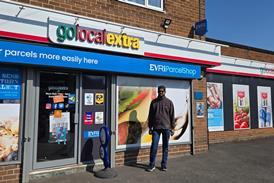



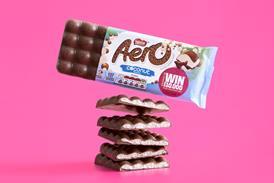

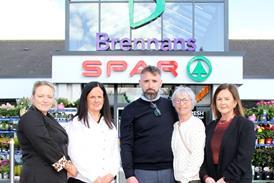
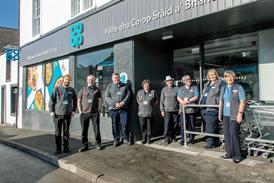
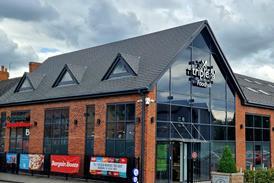

![WG-4003[58]](https://d2dyh47stel7w4.cloudfront.net/Pictures/274x183/4/5/1/353451_wg400358_6083.jpg)


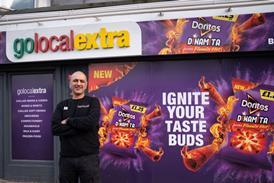


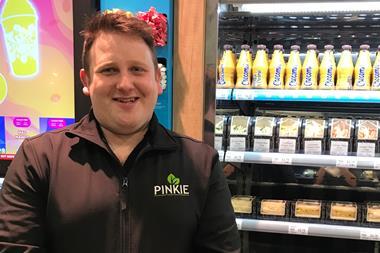
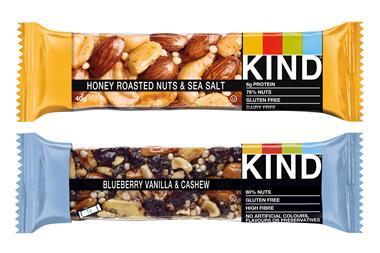

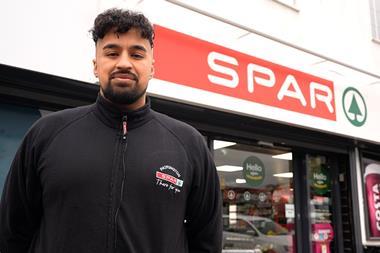
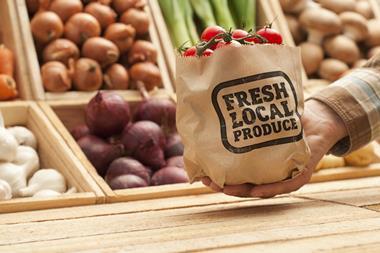

![C-Store_Champions_logo-CHOSEN[1] 2023](https://d2dyh47stel7w4.cloudfront.net/Pictures/380x253/6/5/7/301657_cstore_champions_logochosen12023_817064.jpg)
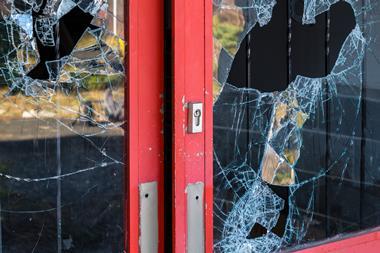
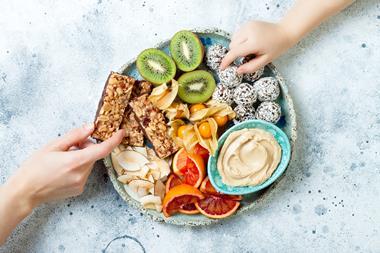


No comments yet